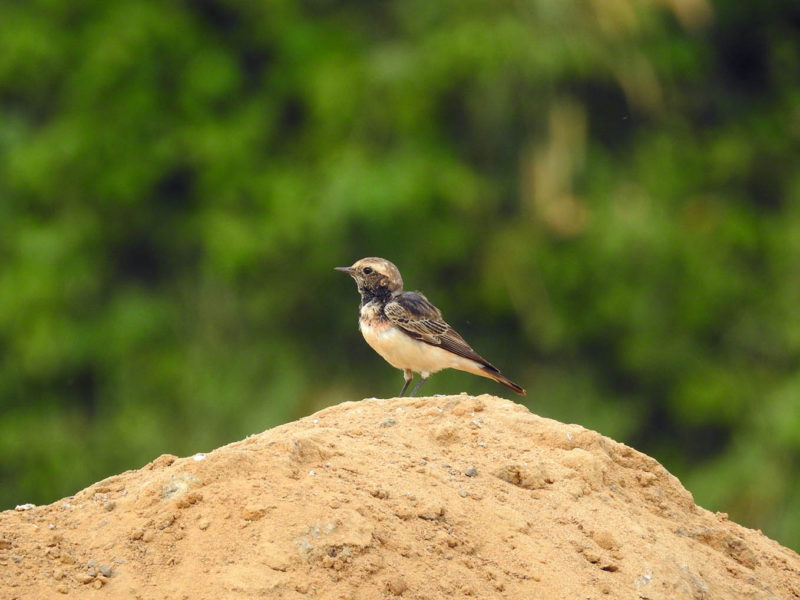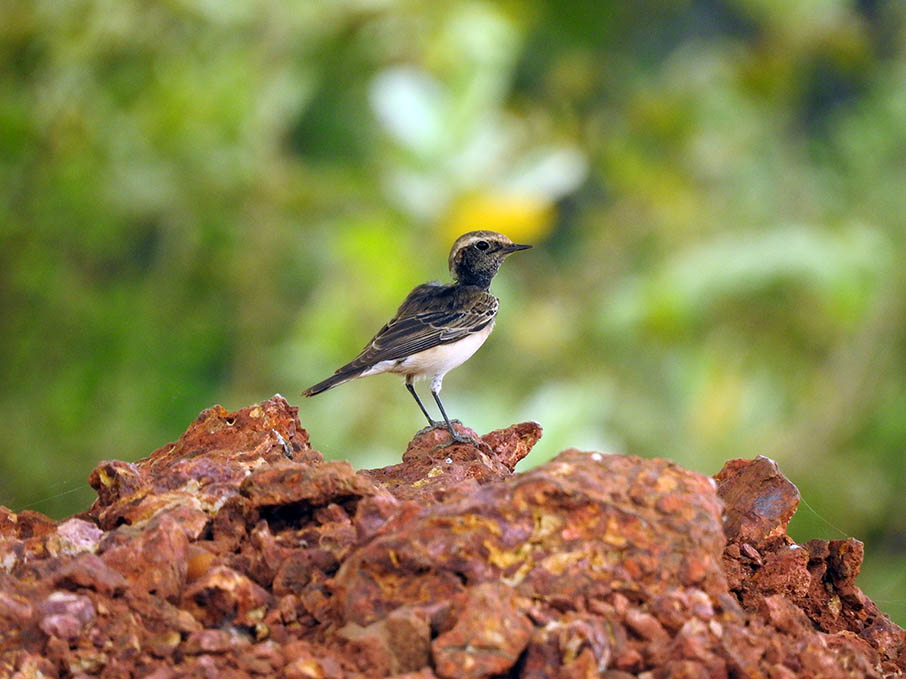As regular practice on the weekends, I visited Kenjar wetlands (74.86°N, 12.95°E), Dakshin Kannada district, Karnataka for birding on 30th November 2019. At about 1645 h, I had just started to look around when I spotted an unfamiliar bird and started photographing it. Although it was looking different, I thought it to be a Siberian Stonechat Saxicola maurus juvenile (Prabhu 2019). I showed the pictures to Roshan, an experienced birder. Later he asked for more pictures and after discussion on a Facebook group, confirmed that it was Pied Wheatear Oenanthe pleschanka. This was the first sighting of the species in Karnataka. It was a wonderful feeling as a beginner to sight a first new record of a species.
I saw the bird on the next day as well and it was photographed by many other bird-watchers in early December. It was last photographed by Tejas K. Rao on 6 December 2019 (Rao 2019). I had been to the place much later on 9th January 2020 but the species was not to be found.

The bird was a non-breeding male with black on throat, face and loral region, mottled with white, and had a sandy cap extending on to the mantle and a creamy white supercilium extending behind the eye. Rest of the upperparts had rather dark brownish-black feathers with broad pale-edged coverts and narrow white-fringed primaries. Among other wheatears, Desert Wheatear O. deserti can show a similar head and face pattern but does not have the dark backed appearance as this individual. A male capistrata morph of the Variable Wheatear O. picata can look like an adult Pied in breeding plumage but will not moult into a non-breeding plumage like this bird – other morphs do not have the capped appearance. Isabelline- O. isabellina, Northern- O. oenanthe and Red-tailed O. chrysopygia Wheatears can be ruled out based on black on throat. A rather unlikely Finsch’s Wheatear O. finschii also do not moult into this plumage.
While it is a first for Karnataka, it has been recorded from localities nearby: in Kerala from the districts of Kasaragod in 2015 and Kannur in 2016 (Reghuvaran 2016, Thomas 2017, Chandran & Praveen 2019) and further north in Goa in 2001 (Newsome 2017). The bird might have been on passage as was suspected in the cases of the above three prior records.
References
Chandran, A., & Praveen, J., 2019. Kerala state bird checklist: Additions during 2015–May 2019. Journal of Threatened Taxa 11 (7): 13941–13946. https://doi.org/10.11609/jott.4904.11.7.13941-13946
Newsome, M., 2017. Pied Wheatear Oenanthe pleschanka in Goa: A retrospective record. Indian BIRDS 13 (1): 25–26.
Prabhu, N. M., 2019. Website URL: https://ebird.org/checklist/S62135196. Accessed on 7 June 2020.
Rao, T. K., 2019. Website URL: https://ebird.org/checklist/S64167577. Accessed on 7 June 2020.
Reghuvaran, P., 2016. Pied Wheatear Oenanthe pleschanka at Bekal Fort, Kasaragod, Kerala. Indian BIRDS 12 (1): 18–19.
Thomas, J., 2017. Website URL: https://ebird.org/ebird/view/checklist?subID=S31746431. Accessed on 11 June 2020.
